Today’s blog post is all about carpal bones, the tiny bones in your wrist that you probably never gave much thought to. Yes, those little guys that make up your complex wrist and allow you to do an amazing range of motions like holding a pen or typing on a keyboard.
But have you ever stopped to contemplate how funny carpal bones are? I mean, they are strangely named after a fish! Yes, you heard it right, the word “carpal” comes from the Greek word “karpos,” which translates into “wrist,” but it is also related to the Greek word “karps,” which means “carp” as in the fish. So basically, your wrist bones are named after an underwater slimy, scaly creature that we all love to eat. How’s that for a fun fact? 🙂
Alright, now without any further ado, let’s dive into the carpal bones mnemonic. But before that, let’s first take a quick look into the carpal bones in general.
Carpal Bones
The carpal bones are basically a group of eight small bones arranged in two rows (proximal & distal) that form the wrist joint. The proximal row is closest to the forearm, whereas the distal row is closest to the hand.
Here’s a brief description of each carpal bone with its 3D bone model to help you better understand its anatomy and relation to the adjacent structures:
Proximal row (closest to the forearm) |
|
1. Scaphoid
|
The scaphoid is the largest carpal bone in the proximal row of the wrist and is located precisely at the base of the thumb. It is the most important bone as it allows a wide range of wrist movements and provides stability. |
2. Lunate
|
The lunate, as seen in its 3D model, is a crescent-shaped bone that sits immediately next to the scaphoid in the proximal row of the wrist. It helps perform wrist flexion and extension. |
3. Triquetrum
|
The triquetrum is a small, pyramid-shaped bone sitting next to the lunate in the proximal row of the wrist. It is involved in wrist abduction and adduction. |
4. Pisiform
|
The pisiform is a tiny, pea-shaped carpal bone located on top of the triquetrum in the proximal row of the wrist. It provides great anatomical support to the wrist and is important for a wide range of motions. |
Distal row (closest to the hand) |
|
5. Trapezium
|
The trapezium is the smallest carpal bone in the distal row of the wrist and is located at the base of the thumb. It is responsible for wrist flexion and abduction. |
6. Trapezoid
|
The trapezoid is a small, wedge-shaped carpal bone that is located next to the trapezium in the distal row. It provides support to the wrist and is involved in a wide range of wrist movements. |
7. Capitate
|
The capitate is the largest carpal bone in the wrist and is situated at the center of the distal row. It helps in wrist extension and gives stability to the wrist joint. |
8. Hamate
|
The hamate is a wedge-shaped carpal bone that sits adjacent to the capitate in the distal row of the wrist. It assists in wrist flexion and extension and also serves as a site for attachment for various muscles and ligaments. |
Here’s the final product… 🙂
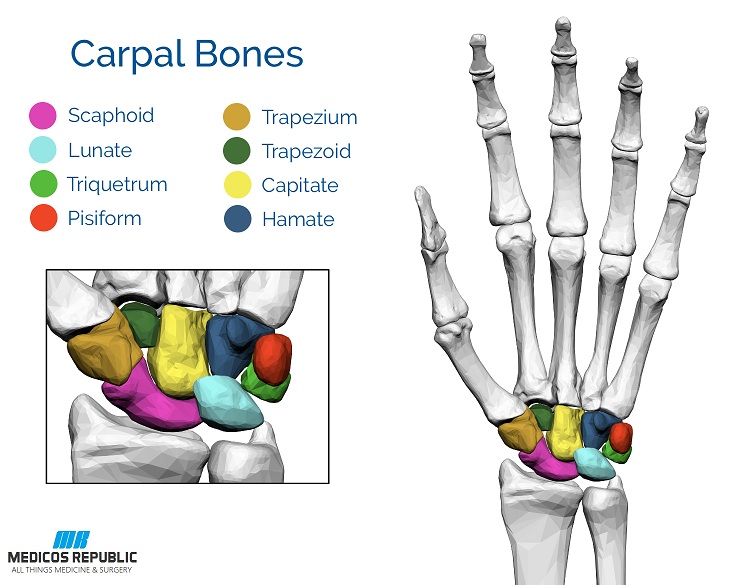
Isn’t that a marvelous creation?! ![]()
[adinserter block=”2″]
Carpal bones Mnemonic
Medical mnemonics are an amazing memory tool. Here are two very easy-to-remember carpal bones mnemonics to help you memorize the carpal bones in proper sequence (this is very high-yield for your med-school exams): 🙂
- “Some Lovers Try Positions That They Can’t Handle”
- “Sally Left The Party, To Take Cathy Home”
Here’s how to use this mnemonic:
It’s very simple. Each letter in the phrase represents the first letter of a carpal bone. In addition, this carpal bones mnemonic also describes the relative position of each carpal bone from radial to ulnar side in which the first 4 belong to the proximal row (1-4) and the last 4 belong to the distal row (5-8):
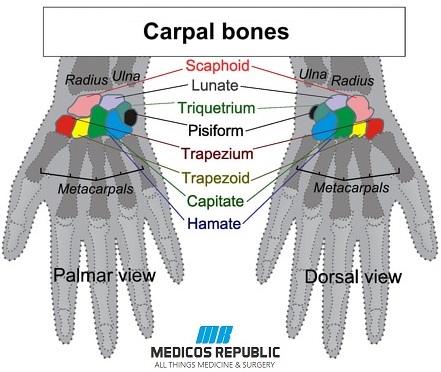
- S – Scaphoid
- L – Lunate
- T – Triquetrum
- P – Pisiform
- T – Trapezium
- T – Trapezoid
- C – Capitate
- H – Hamate
That’s all, folks! We hope that you enjoy this blog post and find it useful.
Happy learning! 🙂

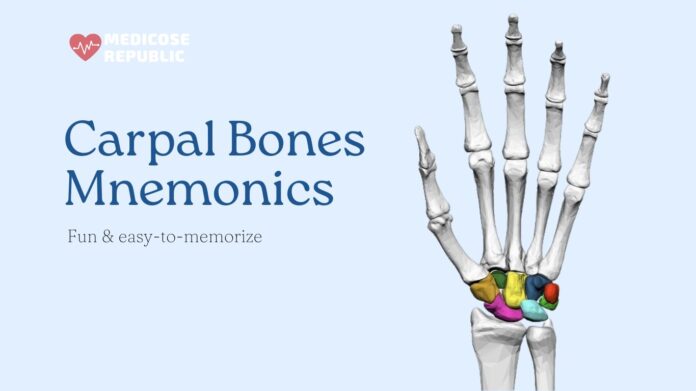
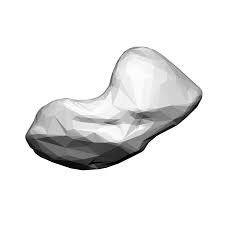
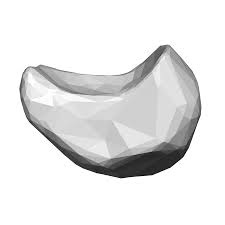
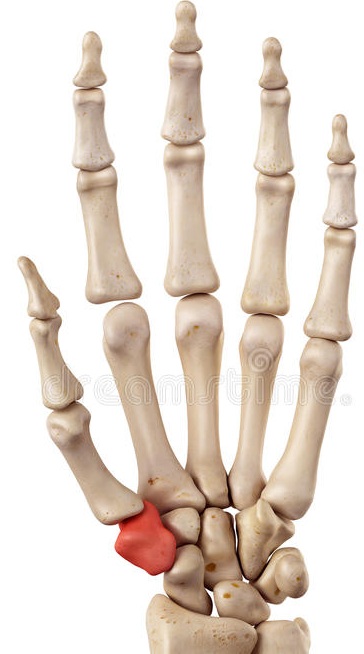
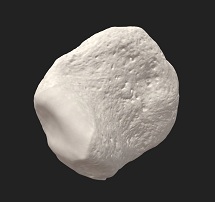
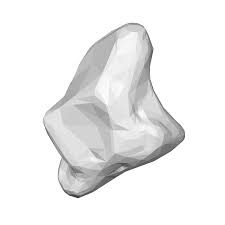
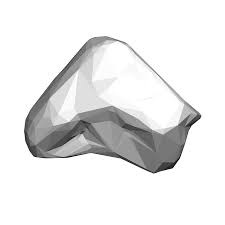
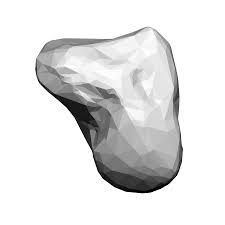
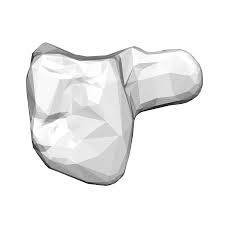
![How to Remember Southern, Northern, and Western Blot Tests [Mnemonic] How to Remember Southern, Northern, and Western Blot Tests](https://www.medicosrepublic.com/wp-content/uploads/2025/06/How-to-Remember-Southern-Northern-and-Western-Blot-Tests-218x150.jpg)



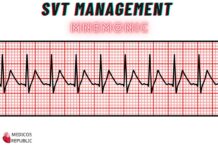


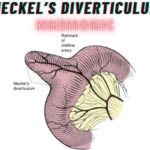




![Gerstmann Syndrome Features Mnemonic [Easy-to-remember] Gerstmann Syndrome Features Mnemonic](https://www.medicosrepublic.com/wp-content/uploads/2025/06/Gerstmann-Syndrome-Features-Mnemonic-150x150.jpg)
![Cerebellar Signs Mnemonic [Easy to remember] Cerebellar Signs Mnemonic](https://www.medicosrepublic.com/wp-content/uploads/2025/06/Cerebellar-Signs-Mnemonic-150x150.jpg)
![Seizure Features Mnemonic [Easy-to-remember] Seizure Features Mnemonic](https://www.medicosrepublic.com/wp-content/uploads/2025/06/Seizure-Features-Mnemonic-1-150x150.jpg)

![Recognizing end-of-life Mnemonic [Easy to remember]](https://www.medicosrepublic.com/wp-content/uploads/2025/06/Recognizing-end-of-life-Mnemonic-150x150.jpg)

![Multi-System Atrophy Mnemonic [Easy-to-remember] Multi-System Atrophy Mnemonic](https://www.medicosrepublic.com/wp-content/uploads/2025/06/Multi-System-Atrophy-Mnemonic-150x150.jpg)

![How to Remember Southern, Northern, and Western Blot Tests [Mnemonic] How to Remember Southern, Northern, and Western Blot Tests](https://www.medicosrepublic.com/wp-content/uploads/2025/06/How-to-Remember-Southern-Northern-and-Western-Blot-Tests-150x150.jpg)









